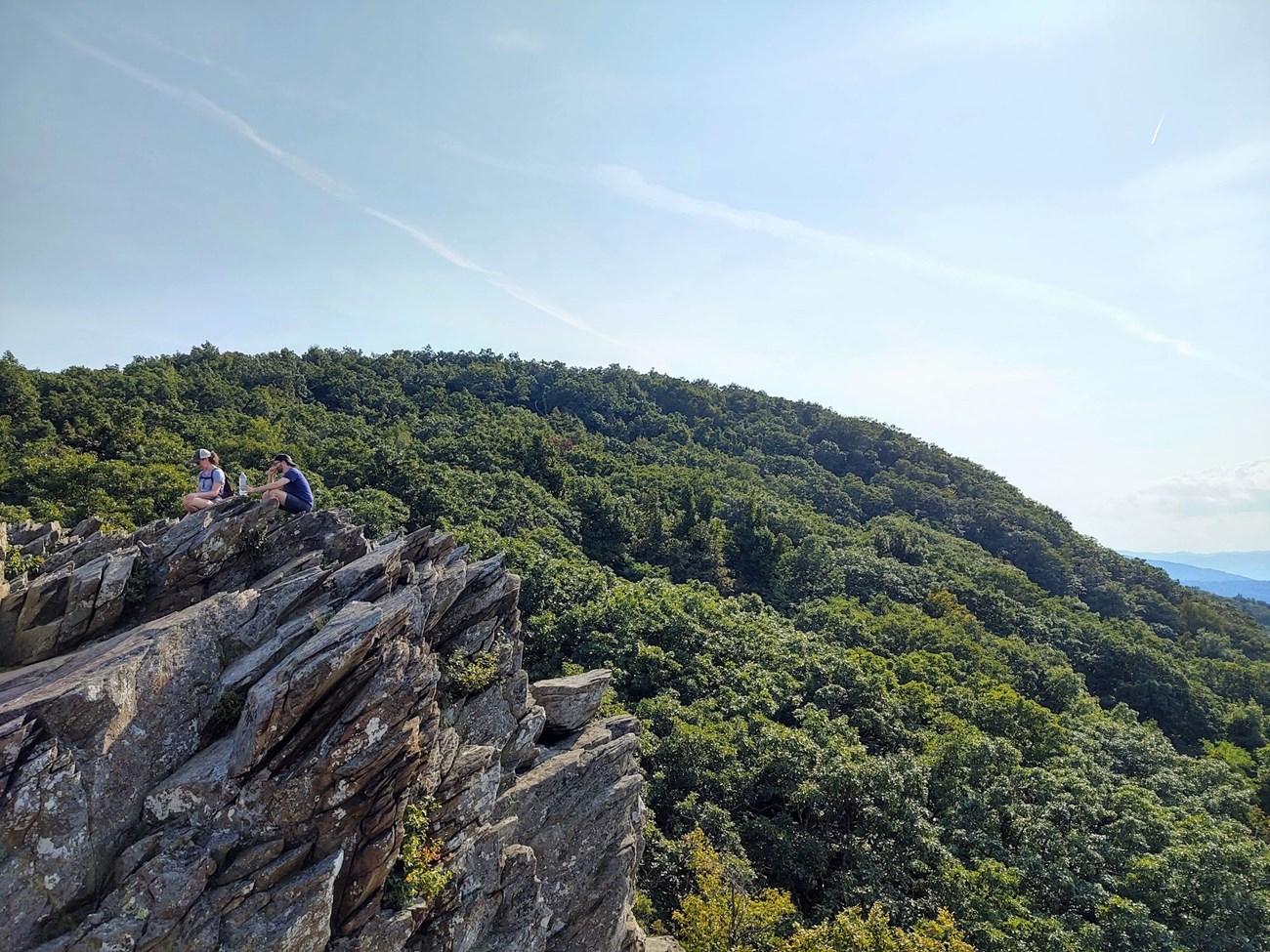
Scenic Wonders of the Blue Ridge Parkway
Explore the Blue Ridge Parkway in Virginia: a scenic drive filled with breathtaking views, historic sites, and vibrant autumn colors that captivate the soul.
The Blue Ridge Parkway in Virginia is a treasure trove of natural beauty and cultural history. Stretching for 469 miles, this iconic road offers breathtaking views of the Appalachian Highlands, lush forests, and rolling meadows. Along the way, visitors will encounter a series of overlooks, each providing unique perspectives of the landscape. The Parkway is especially famous for its vibrant fall foliage, which transforms the region into a tapestry of reds, oranges, and yellows. In addition to its stunning vistas, the Blue Ridge Parkway is rich in history and culture. Visitors can explore numerous historic sites, such as Mabry Mill, a working grist mill that offers a glimpse into the past. The Parkway is also home to several visitor centers and museums, where one can learn about the area's natural and cultural heritage. Don't miss the chance to hike one of the many trails that meander through the region, offering opportunities to see native wildlife and plant species. Whether you're a nature lover, a history buff, or simply looking for a peaceful drive, the Blue Ridge Parkway in Virginia promises an unforgettable experience. Take your time to explore the small towns and communities that dot the route, each offering their own unique charm and hospitality. The Parkway is a true testament to the natural beauty and rich heritage of the American South.
Local tips in Blue Ridge Parkway
- Plan your visit during the fall season to experience the most vibrant foliage.
- Stop by Mabry Mill for a picturesque photo opportunity and to learn about Appalachian heritage.
- Bring a picnic to enjoy at one of the many overlooks along the Parkway.
- Check the weather forecast and road conditions before your trip, as parts of the Parkway can be closed due to inclement weather.
- Visit the Blue Ridge Music Center to enjoy traditional Appalachian music and cultural exhibits.
Scenic Wonders of the Blue Ridge Parkway
The Blue Ridge Parkway in Virginia is a treasure trove of natural beauty and cultural history. Stretching for 469 miles, this iconic road offers breathtaking views of the Appalachian Highlands, lush forests, and rolling meadows. Along the way, visitors will encounter a series of overlooks, each providing unique perspectives of the landscape. The Parkway is especially famous for its vibrant fall foliage, which transforms the region into a tapestry of reds, oranges, and yellows. In addition to its stunning vistas, the Blue Ridge Parkway is rich in history and culture. Visitors can explore numerous historic sites, such as Mabry Mill, a working grist mill that offers a glimpse into the past. The Parkway is also home to several visitor centers and museums, where one can learn about the area's natural and cultural heritage. Don't miss the chance to hike one of the many trails that meander through the region, offering opportunities to see native wildlife and plant species. Whether you're a nature lover, a history buff, or simply looking for a peaceful drive, the Blue Ridge Parkway in Virginia promises an unforgettable experience. Take your time to explore the small towns and communities that dot the route, each offering their own unique charm and hospitality. The Parkway is a true testament to the natural beauty and rich heritage of the American South.
When is the best time to go to Blue Ridge Parkway?
Iconic landmarks you can’t miss
Mabry Mill
Explore the enchanting Mabry Mill, a historical gem on the Blue Ridge Parkway, where history and nature blend into a breathtaking experience.

Peaks of Otter Visitor Center
Explore the captivating Peaks of Otter Visitor Center, where Virginia's stunning landscapes meet rich history and outdoor adventure.

Blue Ridge Parkway Visitor Center
Explore the Blue Ridge Parkway Visitor Center, your gateway to scenic drives, hiking trails, and the natural beauty of Virginia's Blue Ridge Mountains.

The Great Valley Overlook
Experience unmatched beauty at the Great Valley Overlook, a scenic gem on the Blue Ridge Parkway offering stunning views and tranquil nature.

Rock Point Overlook
Discover the breathtaking beauty of Rock Point Overlook, a scenic gem along the Blue Ridge Parkway offering stunning vistas and serene nature.

The Saddle Overlook
Discover stunning panoramic views at The Saddle Overlook, a scenic gem along the Blue Ridge Parkway in Virginia's picturesque landscape.

Blue Ridge Parkway - North End
Discover the breathtaking beauty and cultural richness of the Blue Ridge Parkway's North End, a must-visit destination for every nature lover.

Yankee Horse Ridge Trailhead to Wigwam Falls
Explore the breathtaking Yankee Horse Ridge Trailhead to Wigwam Falls on the Blue Ridge Parkway, a stunning hiking experience surrounded by nature's beauty.

Rock Castle Gorge Overlook
Explore the stunning Rock Castle Gorge Overlook, a scenic spot on the Blue Ridge Parkway, offering breathtaking views and a perfect escape into nature's beauty.

Puckett Cabin
Discover the rich history of the Appalachian mountains at Puckett Cabin, a charming historical site along the scenic Blue Ridge Parkway.

Cahas Mountain Overlook
Discover the stunning beauty of Cahas Mountain Overlook, a scenic gem along the Blue Ridge Parkway offering breathtaking views and serene landscapes.

House Mountain Overlook
Discover breathtaking vistas and tranquil moments at House Mountain Overlook along the stunning Blue Ridge Parkway, a must-see for nature lovers.

Porter Mountain View
Discover the serene beauty of Porter Mountain View, a scenic spot on the Blue Ridge Parkway offering stunning mountain vistas and peaceful nature experiences.
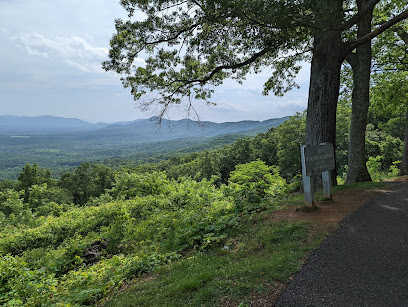
Pine Tree Overlook
Discover the captivating beauty of Pine Tree Overlook on the Blue Ridge Parkway, where stunning mountain vistas await travelers and nature enthusiasts.
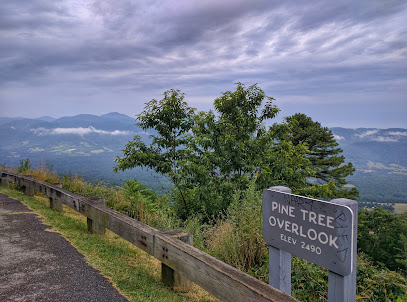
The Quarry Overlook
Discover stunning mountain views and serene landscapes at The Quarry Overlook, the perfect scenic stop along the Blue Ridge Parkway.

Unmissable attractions to see
Mill Mountain Star
Discover the Mill Mountain Star, Roanoke's stunning cultural landmark offering breathtaking views and scenic trails in the heart of Virginia.

Mill Mountain Park
Discover the natural beauty and breathtaking views at Mill Mountain Park, a premier outdoor destination in Roanoke, Virginia.

Craggy Gardens Visitor Center
Explore the beauty of North Carolina at Craggy Gardens Visitor Center, your portal to stunning views and hiking adventures along the Blue Ridge Parkway.

Moses H. Cone Memorial Park
Discover the rich history and natural beauty of Moses H. Cone Memorial Park, where outdoor adventures meet cultural heritage on the Blue Ridge Parkway.

Mabry Mill
Experience the charm of Mabry Mill, a historic landmark on the Blue Ridge Parkway, showcasing Appalachian culture, stunning views, and delicious culinary treats.

Explore Park
Explore Park in Roanoke, Virginia offers breathtaking landscapes, adventure sports, and rich historical experiences for all nature and history enthusiasts.

The Cone Manor
Explore The Cone Manor: A Historical Jewel of the Blue Ridge Parkway blending nature, architecture, and rich heritage in North Carolina.

Linn Cove Viaduct
Explore the stunning Linn Cove Viaduct, an engineering marvel offering breathtaking views and inviting hiking trails in the heart of North Carolina's Blue Ridge Mountains.

Rocky Knob Recreation Area
Experience the beauty and tranquility of Rocky Knob Recreation Area, a perfect family-friendly campground in the heart of Virginia's Blue Ridge Mountains.

The Blue Ridge Music Center
Experience the essence of bluegrass music and Appalachian culture at The Blue Ridge Music Center in Virginia's scenic landscape.

Humpback Rocks
Explore Humpback Rocks: A Scenic Gem in Virginia's Blue Ridge Parkway, Perfect for Hiking and Nature Lovers.

Sharp Top Mountain Trailhead
Discover the breathtaking views and rich biodiversity at Sharp Top Mountain Trailhead, a premier hiking destination in Virginia's Blue Ridge Parkway.

Humpback Rocks Visitor Center and Picnic Area
Discover Humpback Rocks Visitor Center for scenic views, hiking trails, and a taste of Virginia's natural beauty along the Blue Ridge Parkway.

Roanoke River Overlook
Experience the stunning views and serene beauty of the Roanoke River Overlook along Virginia's scenic Blue Ridge Parkway.

Peaks of Otter Visitor Center
Explore the stunning Peaks of Otter Visitor Center, a must-see gem in Virginia's Blue Ridge Mountains, offering breathtaking views, trails, and rich history.

Essential places to dine
Cracker Barrel Old Country Store
Discover the heart of Southern dining at Cracker Barrel Old Country Store in Lynchburg - where comfort food meets charming retail delights.

Carrabba's Italian Grill
Experience the best of Italian-American cuisine at Carrabba's Italian Grill in Roanoke, VA - where every meal is crafted with love and tradition.
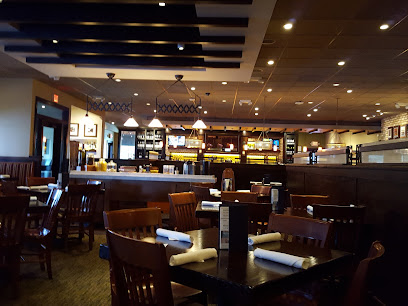
Blue Mountain Brewery
Experience Virginia's finest craft beers at Blue Mountain Brewery amidst breathtaking Blue Ridge Mountain views.

McDonald's
Experience fast food comfort at McDonald's in Hillsville—where delicious meals meet convenience any time of day.

Denny's
Experience classic American breakfasts anytime at Denny's in Fort Chiswell – where comfort food meets convenience.

Mabry Mill Restaurant & Gift Shop
Experience delightful country cuisine amidst stunning views at Mabry Mill Restaurant & Gift Shop on the scenic Blue Ridge Parkway.

Wendy's
Savor delicious fast food at Wendy's in Max Meadows - where quality meets convenience.

Macado's
Discover Macado's in Galax: Where delicious sandwiches meet vibrant local culture in a welcoming atmosphere.

Blue Ridge Grill
Discover Blue Ridge Grill: A delightful blend of American cuisine, fresh seafood & prime steaks in Brambleton, Virginia.

The Gap Deli at the Parkway
Experience delightful American cuisine in a charming deli nestled along Virginia's breathtaking Blue Ridge Parkway.
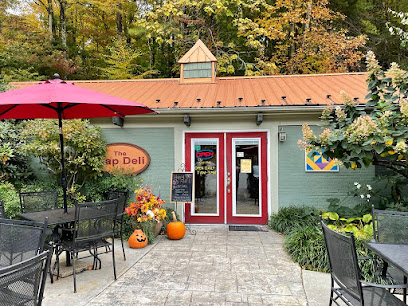
Blue Ridge Diner
Experience the charm of Blue Ridge Diner in Floyd, Virginia - your go-to destination for hearty breakfasts and friendly service.

El Torito
Experience authentic Mexican cuisine at El Torito in Galax, VA - where every meal is a fiesta!

Pizza Hut
Savor delicious pizzas and crispy chicken wings at Pizza Hut in Galax, Virginia – perfect for family meals and takeout!

Blue Mountain Barrel House & Smokin' Barrel Restaurant
Experience craft brews and delicious smoked dishes at Blue Mountain Barrel House & Smokin' Barrel Restaurant in beautiful Arrington, Virginia.

Burger King
Experience the iconic taste of flame-grilled burgers at Burger King in Max Meadows - perfect for travelers seeking delicious fast food.
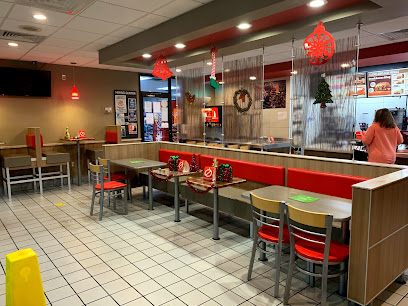
Markets, malls and hidden boutiques
Mabry Mill Restaurant & Gift Shop
Discover the flavors and crafts of the Blue Ridge Mountains at Mabry Mill Restaurant & Gift Shop, where tradition meets natural beauty.

Floyd Country Store
Discover the charm of Floyd, Virginia at the Floyd Country Store – a vibrant hub for shopping, dining, and live music.

The Blue Ridge Music Center
Experience the soulful sounds and rich heritage of Appalachian music at The Blue Ridge Music Center in Virginia.

Humpback Rocks
Explore the breathtaking vistas and challenging trails of Humpback Rocks, a scenic highlight of the Blue Ridge Parkway in Virginia.

Chateau Morrisette Winery
Discover the picturesque Chateau Morrisette Winery, where fine wines, scenic views, and culinary delights await in the heart of Virginia's wine country.

Blue Ridge Antique Center
Explore the Blue Ridge Antique Center – a treasure trove of timeless antiques and vintage collectibles in Wirtz, Virginia.

Blue Ridge Mountain Mall
Explore the charm of Blue Ridge Mountain Mall, a unique gift shop filled with local treasures and artisan creations in the heart of Georgia.

Rocky Knob Visitor Center
Explore the Rocky Knob Visitor Center for essential travel tips and stunning views along the Blue Ridge Parkway, Virginia's natural gem.

Chapters Bookshop
Discover a world of stories and local culture at Chapters Bookshop, Galax's beloved literary nook for every book enthusiast.

Blue Ridge Parkway Rocky Knob Information Center
Discover the breathtaking beauty of the Blue Ridge Parkway at Rocky Knob Information Center, where nature and adventure await.

Cloud's Clothing
Explore stylish apparel and quality uniforms at Cloud's Clothing in Hillsville, Virginia – a local shopping destination filled with charm and character.

Owl's Nest
Explore Owl's Nest, a captivating boutique in Blue Ridge, Georgia, showcasing local crafts, unique gifts, and home decor that celebrate the region's artistry.
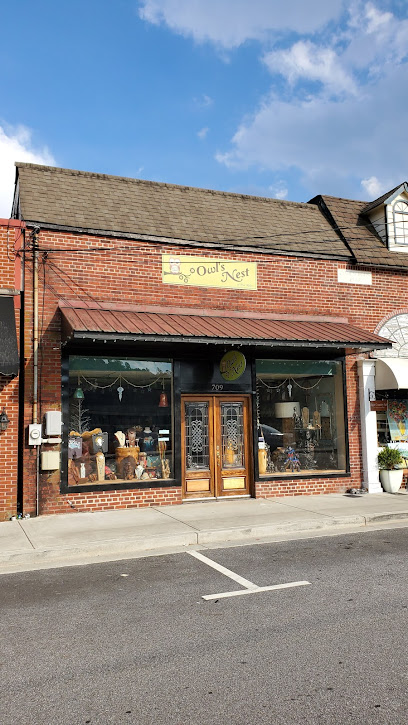
ArtWalk
Discover unique gifts, stunning art, and local craftsmanship at ArtWalk in Blowing Rock, NC - a must-visit boutique for art lovers and gift seekers.

Rustic
Discover unique gifts and local treasures at Rustic, a charming gift shop in Blowing Rock, NC, featuring furniture, gourmet groceries, and home goods.

Blue Ridge Botique
Explore Blue Ridge Boutique in Cana, VA – a charming clothing store offering unique styles and local craftsmanship nestled at the foot of Fancy Gap Mountain.

Essential bars & hidden hideouts
The Town Tavern
Experience the perfect blend of sports, food, and live music at The Town Tavern, a must-visit sports bar in Blowing Rock, NC.

Mabry Mill
Experience the rich history and breathtaking scenery of Mabry Mill, a beloved landmark along Virginia's Blue Ridge Parkway.

Peaks of Otter Lodge
Discover the tranquility of Peaks of Otter Lodge, where stunning mountain views meet warm hospitality in Virginia's Blue Ridge region.
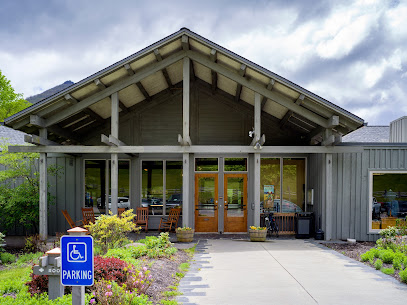
Six Pence Pub
Discover a delightful blend of American and British cuisine at Six Pence Pub in Blowing Rock, NC, where flavor meets charm.
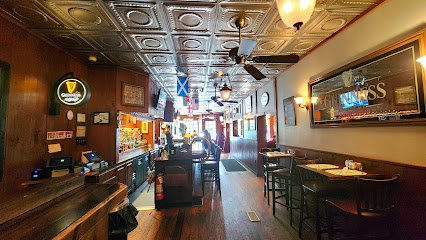
Chester Brunnenmeyer's Bar & Grill
Discover Chester Brunnenmeyer's Bar & Grill, where local flavors meet a vibrant atmosphere in beautiful Blue Ridge, Georgia.

Wasena City Tap Room & Grill
Experience the best of Roanoke's culinary scene at Wasena City Tap Room & Grill, where local flavors meet a welcoming atmosphere and craft beer.
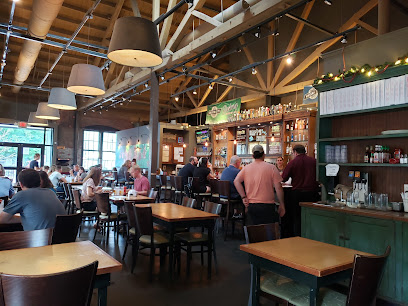
Lost Province Brewing Co.
Experience the best of craft beer and artisanal pizza at Lost Province Brewing Co. in Boone, North Carolina, a true local gem.

Mabry Mill Restaurant & Gift Shop
Experience the heart of Appalachian culture at Mabry Mill Restaurant & Gift Shop, where delicious country food meets stunning mountain views.

The Mason Jar
Discover the flavors of American cuisine at The Mason Jar, Hillsville's favorite bar and grill, where every meal is a celebration of local tastes and hospitality.

Dogtown Roadhouse
Discover the vibrant blend of delicious pizzas and live music at Dogtown Roadhouse in Floyd, Virginia, a must-visit for food and music lovers.
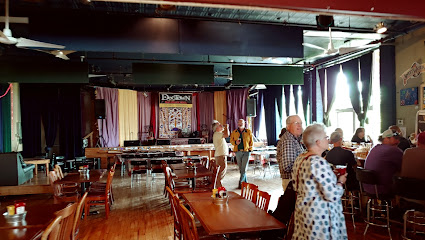
The Blue Coyote
Experience the vibrant atmosphere of The Blue Coyote, where American cuisine meets live music in the heart of Blue Ridge, Georgia.

Rocky Knob Recreation Area
Discover the beauty and serenity of Rocky Knob Recreation Area, a perfect retreat for camping, hiking, and family fun in Virginia's Blue Ridge Mountains.

The Blue Ridge Music Center
Discover the rich heritage of Appalachian music and culture at The Blue Ridge Music Center in Virginia's stunning Blue Ridge Mountains.

Humpback Rocks
Explore Humpback Rocks: A Scenic Gem of the Blue Ridge Parkway Offering Breathtaking Views and Invigorating Hikes.

Pit Stop Pasta & Grill
Discover authentic Italian cuisine at Pit Stop Pasta & Grill in Fancy Gap, VA, where every meal is a flavorful adventure.
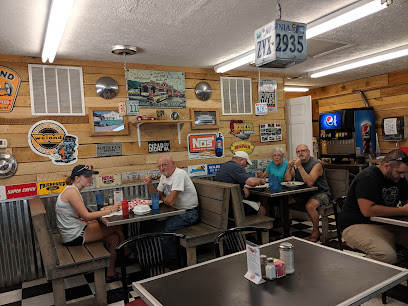
Local Phrases about Blue Ridge Parkway
-
- HelloHowdy
[haw-dee] - GoodbyeSee ya
[see yah] - YesYup
[yuhp] - NoNah
[nuh] - Please/You're welcomePlease/You're welcome
[pleez/yur wel-kum] - Thank youThank ya
[thank yah] - Excuse me/SorryPardon me
[par-dn me] - How are you?How ya doin'?
[haw yuh doo-in'] - Fine. And you?Fine. And you?
[fahyn. n' yuh?] - Do you speak English?Ya speak English?
[yah speek ing-glish?] - I don't understandI don't git it
[ah dun git it]
- HelloHowdy
-
- I'd like to see the menu, pleaseI'd like to see the menu, please
[ahd lahk t' see thuh menu, pleez] - I don't eat meatI don't eat meat
[ah dun eat meet] - Cheers!Cheers!
[cheers!] - I would like to pay, pleaseI would like to pay, please
[ah wood lahk t' pay, pleez]
- I'd like to see the menu, pleaseI'd like to see the menu, please
-
- Help!Help!
[help!] - Go away!Git outta here!
[git out-uh here!] - Call the Police!Call the Sheriff!
[kahl thuh sher-iff!] - Call a doctor!Call a doc!
[kahl uh dahk!] - I'm lostI'm plumb lost
[ahm pluhm lost] - I'm illI'm feelin' poorly
[ahm feel-in' poor-lee]
- Help!Help!
-
- I'd like to buy...I'd like t' buy...
[ahd lahk t' bahy...] - I'm just lookingI'm just lookin'
[ahm juhst look-in'] - How much is it?How much fer that?
[haw much f'r that?] - That's too expensiveThat's too pricey
[that's too prahy-see] - Can you lower the price?Can ya knock the price down?
[kan yah nahk thuh price doun?]
- I'd like to buy...I'd like t' buy...
-
- What time is it?What time ya got?
[what time yah gaht?] - It's one o'clockIt's one
[its wun] - Half past (10)Half past (10)
[haff past (10)] - MorningMornin'
[morn-in'] - AfternoonAfternoon
[after-noon] - EveningEvenin'
[ee-ven-in'] - YesterdayYest'day
[yes-t'day] - TodayToday
[t'day] - TomorrowTomorrah
[tom-or-rah] - 1One
[wun] - 2Two
[too] - 3Three
[three] - 4Four
[four] - 5Five
[five] - 6Six
[six] - 7Seven
[seven] - 8Eight
[eight] - 9Nine
[nine] - 10Ten
[ten]
- What time is it?What time ya got?
-
- Where's a/the...?Where's the...?
[wheres thuh...?] - What's the address?What's the address?
[whats thuh address?] - Can you show me (on the map)?Can ya show me where on the map?
[kan yah show me whair on thuh map?] - When's the next (bus)?When's the next (bus)?
[whens thuh next (bus)?] - A ticket (to ....)A ticket (to ....)
[uh ticket (tuh ....)]
- Where's a/the...?Where's the...?
History of Blue Ridge Parkway
-
Long before European settlers arrived, the Blue Ridge Parkway region was home to Native American tribes, including the Cherokee and Monacan people. These tribes lived off the land, utilizing the abundant natural resources for hunting, gathering, and agriculture. The rich cultural heritage of these early inhabitants is still evident today in archeological sites and preserved artifacts.
-
The arrival of European settlers in the 17th and 18th centuries brought significant changes to the Blue Ridge region. The fertile valleys and accessible mountain passes attracted pioneers looking to establish homesteads and farms. The European settlers introduced new agricultural practices and built communities that would lay the foundation for future development in the area.
-
The Blue Ridge Parkway region played a notable role during the American Civil War. The mountainous terrain provided strategic advantages for both Union and Confederate forces. Numerous skirmishes and troop movements occurred in the area, and the region's residents were deeply affected by the conflict. Historic sites and battlefields, such as the Humpback Rocks Farm, offer a glimpse into this tumultuous period.
-
The idea for the Blue Ridge Parkway was conceived during the Great Depression as part of President Franklin D. Roosevelt's New Deal programs. The parkway was designed to create jobs and boost tourism while preserving the natural beauty of the Appalachian Mountains. Construction began in 1935 and continued for several decades, involving significant engineering feats to navigate the rugged terrain.
-
The Blue Ridge Parkway is a living museum of Appalachian culture. The region is renowned for its rich traditions in music, crafts, and storytelling. Visitors can explore these cultural aspects at various points along the parkway, such as the Blue Ridge Music Center, which celebrates the area's musical heritage, and the numerous craft shops and festivals that showcase local artisans.
-
The establishment of the Blue Ridge Parkway also marked a significant commitment to conservation. Efforts to protect the diverse ecosystems, flora, and fauna of the region have been ongoing. The parkway's scenic vistas, hiking trails, and preserved natural areas offer visitors a chance to experience the unspoiled beauty of the Appalachian Mountains while learning about the importance of environmental stewardship.
Blue Ridge Parkway Essentials
-
Blue Ridge Parkway in Virginia can be accessed via several major highways. The northern entrance is near Waynesboro, Virginia, accessible from Interstate 64. The southern end connects to the Great Smoky Mountains National Park near Cherokee, North Carolina. The closest major airports are Roanoke-Blacksburg Regional Airport in Roanoke, VA, and Piedmont Triad International Airport in Greensboro, NC. Car rentals are available at these airports.
-
The best way to explore Blue Ridge Parkway is by car. The parkway itself is a scenic drive, and there are numerous overlooks and trailheads accessible by vehicle. Biking is another popular option, but be prepared for challenging terrain. Public transportation options are limited, so having your own vehicle or a rental car is highly recommended.
-
The official currency is the US Dollar (USD). Credit and debit cards are widely accepted, but it's a good idea to carry some cash, especially for smaller establishments or in more remote areas. ATMs are available in towns near the parkway, such as Waynesboro and Roanoke.
-
Blue Ridge Parkway is generally a safe destination for tourists. However, be cautious of wildlife and changing weather conditions, as they can pose safety risks. There are no specific high-crime areas targeting tourists along the parkway, but standard precautions such as locking your vehicle and not leaving valuables visible are advisable.
-
In case of emergency, dial 911 for immediate assistance. Cell phone reception can be spotty in some areas, so it's advisable to carry a map and know your location. There are ranger stations and visitor centers along the parkway where you can seek assistance. It's recommended to have travel insurance that covers medical emergencies.
-
Fashion: Do wear comfortable, weather-appropriate clothing and sturdy shoes. Don't wear clothing that isn't suitable for hiking if you plan to explore trails. Religion: Do respect any religious sites or memorials you might encounter. Public Transport: Don't rely on public transport; plan to have your own vehicle. Greetings: Do greet people with a friendly hello; locals and fellow travelers are generally very approachable. Eating & Drinking: Do try local cuisine in nearby towns. Don't leave trash behind; practice Leave No Trace principles.
-
To experience Blue Ridge Parkway like a local, visit during the weekdays to avoid the crowds. Engage with park rangers at visitor centers for insider tips on the best trails and overlooks. Local farmers' markets in towns like Roanoke offer fresh produce and unique local products. Don't miss the fall foliage season, which offers some of the most stunning views along the parkway.
Trending Landmarks in Blue Ridge Parkway
-
Mabry Mill
-
Peaks of Otter Visitor Center
-
Blue Ridge Parkway Visitor Center
-
The Great Valley Overlook
-
Rock Point Overlook
-
The Saddle Overlook
-
Blue Ridge Parkway - North End
-
Yankee Horse Ridge Trailhead to Wigwam Falls
-
Rock Castle Gorge Overlook
-
Puckett Cabin
-
Cahas Mountain Overlook
-
House Mountain Overlook
-
Porter Mountain View
-
Pine Tree Overlook
-
The Quarry Overlook
Nearby Cities to Blue Ridge Parkway
-
Things To Do in Charlottesville
-
Things To Do in Harrisonburg
-
Things To Do in Lynchburg
-
Things To Do in Roanoke
-
Things To Do in Elkins
-
Things To Do in Richmond
-
Things To Do in Lewisburg
-
Things To Do in Petersburg
-
Things To Do in Blacksburg
-
Things To Do in Harper's Ferry
-
Things To Do in Martinsburg
-
Things To Do in Waldorf
-
Things To Do in Bethesda
-
Things To Do in Rockville
-
Things To Do in Clarksburg












